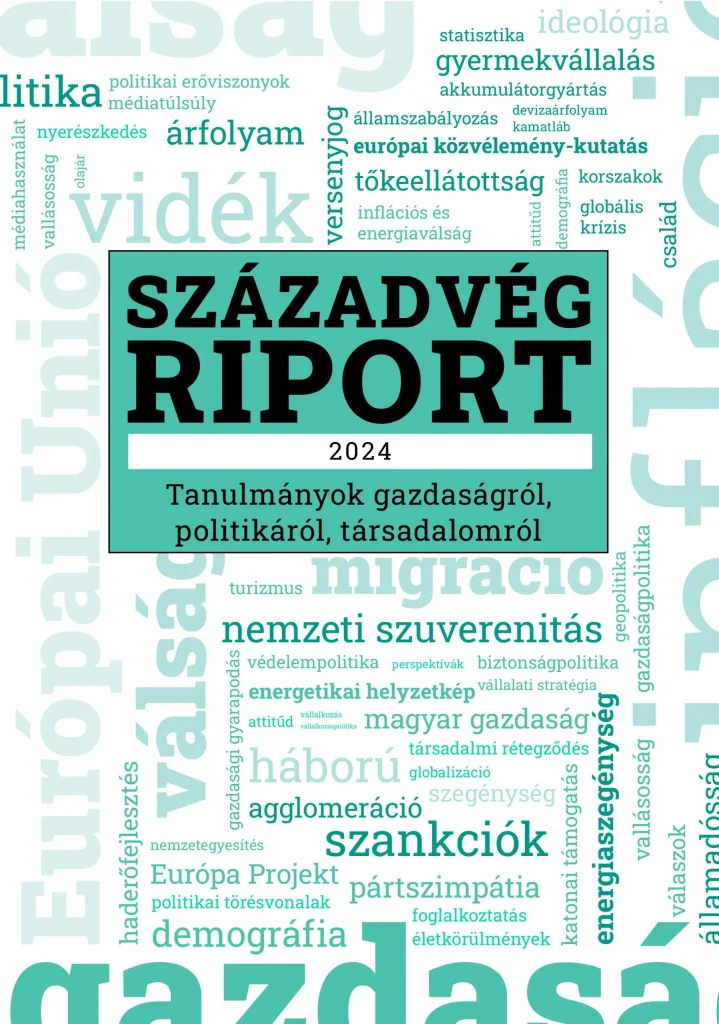The prosperity index remained in negative territory, determined by the uncertainty caused by the prolonged Russia-Ukraine war and the economic sanctions. Significant improvement in economic expectations is likely to occur if the war ends, inflation remains in the central bank’s target range (between 2% and 4%), the interest rate environment becomes more favourable, and energy markets see sustained low prices.
One of the sub-indices of the household prosperity index strengthened and three weakened compared to the previous month. Employment continues to be the most positively assessed, although it has deteriorated from -1.0 in the previous month to -2.4. The perception of the economic environment weakened in January from -27.1 points in the previous month to -27.9, and the sub-index for inflation perception decreased from -64.3 to -66.0. Meanwhile, the perception of financial situation increased from -12.2 to -10.3.
Compared with December, the biggest positive shift in the January 2025 household survey is that significantly more households are planning to spend more in the coming year.
In January, when asked “Do you plan to make major expenditures (e.g. buying or renovating a home, buying a car, etc.) in the next year?”, household responses showed that 26.3% of respondents (3.5 percentage points more than in December) plan to make major expenditures in the next year, while 72.7% (3.7 percentage points less) do not plan to do so.
Looking at households’ sense of prosperity by level of education, one of the four categories showed a significant weakening, while three showed a improvement. For those with primary education or less, the prosperity index fell by 6.0 index points to -19.0 index points. Among those with vocational school or vocational school leaving certificate, those who have completed secondary school as well as those with tertiary education, the sense of prosperity has become more optimistic (by 0.2, 3.5 and 0.6 index points, respectively). Overall, in terms of current economic sentiment, the -14.7 index point for those with secondary education is the most optimistic, followed by -15.1 for those with tertiary education, -16.3 for those with vocational school or vocational school leaving certificate and -19.0 for those with no more than primary education.
The business survey showed an improvement in all sub-indices. The production environment sub-index improved from -9.5 to -7.6 index points in January, the industrial environment sub-index weakened from -6.2 to 1.0, the economic environment sub-index from -30.5 to -29.0 and the business environment index from -25.0 to -22.6.
For businesses, the biggest positive change in January 2025 was for industry outlooks.
In fact, when asked “How do you think your industry’s prospects will develop in the next 1 year?”, business leaders gave an overall significantly more positive response in January than in December. This month, 3.4% of companies (up from 1.6% in December) said that the outlook for their industry was improving strongly. Furthermore, 25.1% forecast a slight improvement (+2.5 percentage points compared to December), while 41.4% (+4.1 percentage points) expect the outlook for the industry to remain unchanged. 21.2% (-6.2 percentage points) of the companies surveyed expect the outlook for the industry to deteriorate slightly, while 7.0% (-2.2 percentage points) expect the outlook for the industry to deteriorate significantly.
When looking at the sectoral breakdown of businesses, it can be seen that business sense of prosperity has increased on average in all sectors. This month, the largest index improvement was seen in construction (+9.4 index points). Industry improved by 5.7, trade by 2.8, agriculture by 1.2 and services by 0.4 index points. That month, the strongest sense of prosperity was recorded for agriculture (-6.2) and the weakest for services (-14.6).
The purpose of the prosperity survey conducted by Századvég Konjunktúrakutató is to provide information to decision-makers and analysts on current and near-term economic developments. Since August 2019, our Institute has been producing the business and consumer prosperity index on a monthly basis. Our monthly survey asks 1,000 business leaders and 1,000 adult residents about their assessment of the economic situation and their expectations. For the two groups, we ask 29 and 28 questions respectively, covering a wide range of economic life. Among the responses received, positive ones (e.g. expected economic improvement) are given a positive score, while negative ones (expected decrease in employment) are given a negative score. The scores are then averaged and converted to a scale between -100 and +100 to obtain the prosperity indices. Thus, the higher the value of the prosperity indices, the more positive households’ and companies’ perception of the economy is. In addition, for both the household and the business survey, 4 sub-indices are constructed using a subset of the questions to illustrate the evolution of economic sentiment in a particular area.
